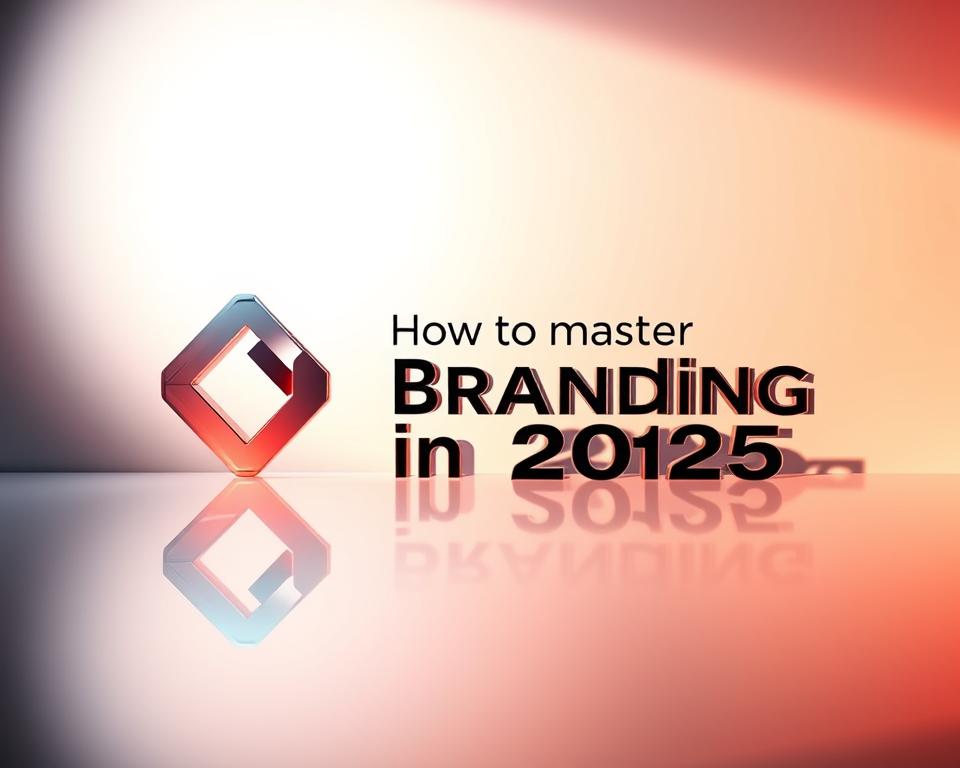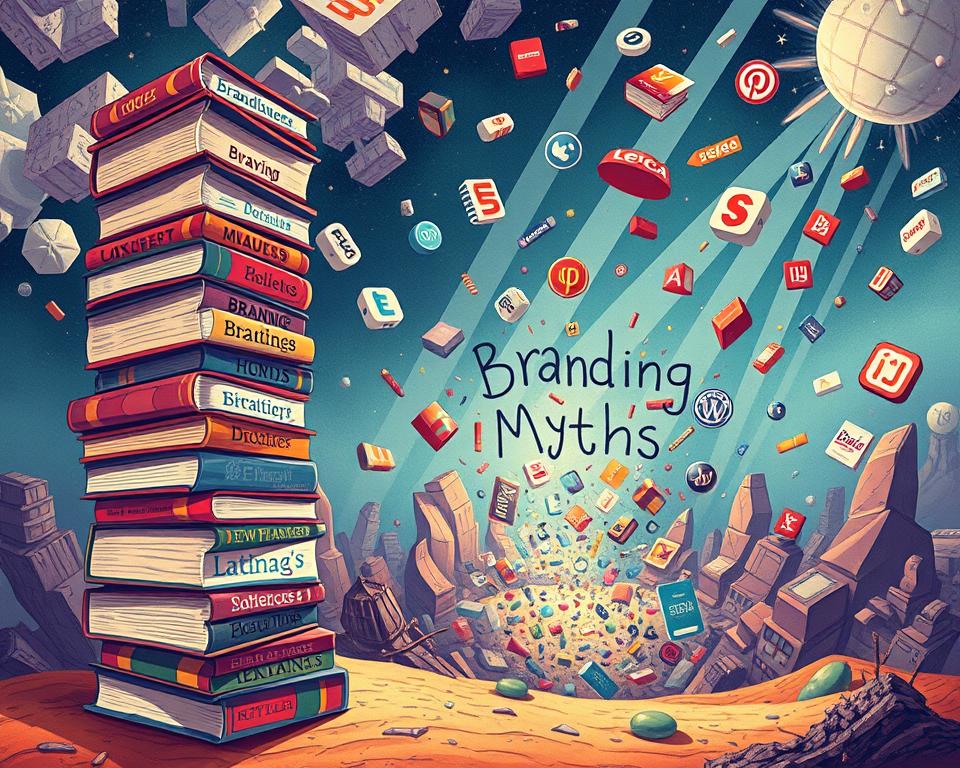Anúncios
branding checklist is the quick start you need to align your team and protect what makes your brand work.
Do you wonder why some companies feel cohesive while others scatter their message? Small, consistent moves make a big difference.
This short guide explains why identity rules, a clear style guide, and simple governance matter now. Many teams treat a brand style guide as a practical list of specs that keeps written, visual, and audio elements uniform for customers.
You’ll get practical steps to document choices, train collaborators, and use tools like a CDP for audience insight and a DAM for approved assets. Make sure you run small tests, measure results, and iterate so your business keeps a strong identity without wasted work.
Introduction: Why a branding checklist matters right now
Today’s market moves fast, and clear identity choices save you time and confusion. A short, accessible guide acts as a single source for marketing, product, sales, and service teams. Keep it handy and people produce faster with fewer questions.
Anúncios
Context and relevance in the present market
In crowded categories, small decisions decide recall. A clear brand guide helps you focus on what your audience values today. That focus cuts noise and speeds work across channels.
How this checklist supports consistency without overpromising
This approach gives practical rules — logo choice, tone, color HEX codes, and alignment with values — not guarantees. Use templates and examples so teammates answer routine questions fast.
What you’ll gain from following these steps
- Fewer revisions and faster approvals for your team.
- Clear briefs for agencies and better campaign alignment.
- An easier way to test small changes, learn from data, and iterate.
Use the guide as a living tool. Keep the brand story current and adapt the checklist as your business and audience shift.
Anúncios
Lay your foundation: Mission, vision, values, and a single differentiated idea
Start by fixing the core ideas that guide every decision your team makes. A clear foundation lets you act fast and keeps messages aligned with what customers notice.
Mission as your North Star
Write a concise mission that answers why your company exists for customers, not just how you make money. Keep the mission short so teams can remember and use it when choosing priorities.
Turn the mission into a working statement that teams use to approve work, not just a slide in a deck.
Vision as activation
Define a vision that shows what success looks and feels like in the market and customer experience. Make it tangible so teammates see how to activate it day to day.
Values and one focused idea
Pick values you will keep under pressure and use them for hiring, service standards, and trade-offs. Avoid vague claims like “great service” as core values.
- Document the brand identity foundation in a short guide that’s easy to find and update.
- Choose one differentiated idea you want your brand to own; focus beats breadth for recall.
- Pressure-test mission, vision, and values with customer feedback and refine them based on data.
Revisit quarterly. Small tests and measured updates keep your foundation current and useful.
Know your audience: Research, data, and real customer insights
Collecting useful customer insight starts with mapping where your data already lives. Look across CRM, analytics, support logs, and surveys to see how information flows through your team.
Use integrated data as an option, not a rule. A CDP can combine first-party inputs into one profile per customer so you spot behavior and preference patterns. Treat it as a tool to reduce guesswork, not a silver bullet.
Build practical personas and validate them
Go beyond demographics. Capture psychographics, jobs-to-be-done, and buying triggers. Validate with interviews and behavior metrics, then update when patterns change.
- Map where audience insight lives and how it moves through your process.
- Translate findings into identity choices—words, visuals, and experiences that matter.
- Document key learnings in your guide so teams use them in briefs and reviews.
Respect privacy. Use only the assets and data you are allowed to use, and tie success metrics to real behavior like repeat visits or time on task.
Positioning, promise, and personality that customers remember
Your brand lives where promise and personality meet in the moments customers notice.
Articulate a brand promise customers actually value. Convert your mission into one clear statement that explains what people can count on beyond features and price. Tie that promise to outcomes—time saved, confidence, or fewer surprises. Pressure-test the statement with real customers and refine it until it feels credible and specific.

Define a human personality and expected behaviors
Pick three human traits your team can deliver consistently, for example: helpful, deliberate, and warm. For each trait, list two concrete behaviors.
- Helpful: quick, clear email replies; proactive follow-ups.
- Deliberate: set realistic timelines; explain trade-offs.
- Warm: friendly greetings at events; human tone in support messages.
Examples make this real. A helpful tone shortens email subject lines and adds next steps. A deliberate way means no overpromising on inventory. A warm style changes how you greet visitors or answer phone calls.
Align the promise with your values so positioning holds up under real constraints like timing or policy. Summarize your positioning in one short paragraph your team can memorize and use in sales and hiring.
“We help busy teams get clear outcomes with fewer surprises — delivered helpfully and on time.”
Finish with a short brand story that links your origin to the customer problem and today’s promise. Share this positioning with partners so sponsorships and co-marketing support the same message. Revisit after major launches or market shifts to keep your identity and story useful.
Design your visual system: Logo, colors, typography, and media
Your visual system should make decisions simple for anyone creating customer-facing work. Start with clear rules so teams reproduce a consistent identity across print, web, and audio channels.
Logo fundamentals: simplicity, legibility, and consistent use
Choose a logo that reads at small sizes and has defined lockups for apps, packaging, and favicons. Make sure the wordmark stays legible and the icon is distinct on crowded screens.
Color palette and typography choices that reflect identity
Define primary and secondary color values (HEX, RGB, CMYK) and a typographic scale that preserves readability. Use type sizes and weights that work on mobile and large displays.
Accessibility and contrast: readable, inclusive design
Specify contrast ratios that meet accessibility guidance so everyone can read your content. Document minimum sizes, spacing rules, and when to use monochrome or stacked marks.
Imagery and audio guidance for cohesive experiences
Provide approved imagery styles, alt-text conventions, and audio tone notes so photos, music, and voiceovers feel like a single style.
- Usage examples: billboard, email, app header.
- Preflight checklist: file formats, color profiles, export settings.
- Update rules: archive retired assets and log when new channels appear.
Find your voice: Tone, narrative, and optional tagline
Words shape how people feel about your company from the very first line they read. Documenting your voice makes writing predictable and easier for everyone on the team.

Document tone of voice for cross-team consistency
Start with three tone attributes—clear, warm, and practical—and give a short do/don’t for each. For example, do use short, action-oriented sentences; don’t use jargon-heavy phrases that confuse people.
Map those attributes to contexts: ads, support, legal, and socials. This helps your brand sound human while meeting policy and legal needs.
Brand story and when a sticky tagline helps
Write one-paragraph brand story that states the problem, your solution, and one proof point. Reuse that story in bios, intros, and pitch decks so the identity stays consistent.
“We help busy teams get clear outcomes with fewer surprises — delivered helpfully and on time.”
A tagline is optional. If you choose one, keep it short, specific, and memorable—made to carry the core promise in a few words.
- Define tone attributes with short do/don’t examples so people can write in the same voice.
- Create message frameworks (problem → solution → proof) and a glossary for consistent terms.
- Make sure editorial guidelines cover grammar, inclusive language, and reading level.
- Include voice examples: homepage hero, release note, and service email.
- Train spokespeople and review tone twice a year to keep it fit for your audience.
Your branding checklist
A compact list of essentials helps teams move faster and stay aligned on public-facing content. Use this guide as an end-to-end road map from purpose to production.
From purpose and audience to assets, guidelines, and templates
Start with strategy: state purpose, mission, and values. Make sure each line is short, specific, and used in briefs so the team applies identity in decisions.
- Document audience insights and top use cases so creators know who customers are and why it matters.
- List logo versions, color codes, fonts, spacing, and do/don’t examples to remove guesswork.
- Provide voice, messaging pillars, and sample content for key channels to speed content creation.
- Include templates for decks, one-pagers, emails, and social posts to keep company materials consistent.
- Catalog imagery style, iconography, motion rules, audio guidance, and caption standards.
Centralize brand assets in a single location and link it from your style guide or brand style guide. Outline the approval process, owners, and SLAs so the process moves quickly. Add a short pre-publish scan and a place to submit feedback so updates reach the whole company.
Operationalize consistency: Brand guidelines, approvals, and asset management
Make consistency a daily habit by turning your rules into simple, usable steps. A short intro in the style guide should point people to the most common answers so teams spend time creating, not correcting.
Write practical brand guidelines and keep them accessible
Draft brand guidelines that show, not just tell. Include annotated examples, file specs, and channel-specific rules so people can copy confident formats.
Keep the style guide searchable and online. When people find answers fast, they use the right assets and produce better content.
Set up an approval workflow to avoid off-brand content
Define roles, timelines, and objective criteria for reviews. When reviewers follow a checklist, decisions are faster and less subjective.
Centralize brand assets with DAM; train teams on usage
Store approved files in a DAM to manage versions, permissions, and expirations. This reduces accidental use of outdated assets and speeds work across the company.
Train people and agencies on where to find brand assets, how to request exceptions, and who owns updates.
Real-world note: Brands using DAM to ensure consistency
Many companies use DAM to keep a single source of truth. For example, Hootsuite, McCormick, and Energizer rely on centralized systems to deliver consistent brand experiences.
- Track common errors and update guidelines to prevent repeats.
- Integrate the style guide into onboarding so new hires create on-brand work sooner.
- Set simple KPIs—asset adoption and reduced rework—to show value.
“A living style guide plus clear approvals makes it easier for teams to do the right thing quickly.”
Measure, learn, and iterate with data
Use simple data routines to spot where your identity is working — and where it’s not. Start with short, regular checks so measurement stays practical and routine.
Audit consistency quarterly across site, app, socials, email, sales decks, and support content. A quick audit shows gaps in visual and verbal identity and points to one clear fix at a time.
Audit consistency and track asset performance over time
Track asset metrics by channel: downloads, reuse, engagement, and task completion. Compare formats and versions to see which design and content choices drive better results for customers.
- Run lightweight experiments and A/B tests where ethical and compliant; test one variable at a time.
- Monitor recall proxies—direct traffic, branded search share, and brand lift surveys—when feasible.
- Segment results by audience so you know which values and visuals resonate with each cohort.
- Tie content metrics to business outcomes like lead quality, activation, and retention.
- Document findings in your guide and update logo, templates, or values expression as needed.
Keep quality protected: define acceptance criteria for new creative and a simple way to retire outdated assets. Review customer feedback, tickets, and NPS verbatims to spot unclear promises.
Iterate with care. Scale what performs, sunset what doesn’t, and avoid dark patterns. Small, data-driven experiments help your team improve quality over time while keeping customer trust first.
Conclusion
Finish strong by turning this guide into daily habits that keep work simple and repeatable. Use the branding checklist to align decisions across teams and channels, then teach those steps so they travel with your projects.
Centralize assets, keep your style guide easy to find, and make sure updates flow to everyone. Test creative ideas on a small scale, measure results with reliable data, and iterate based on evidence.
Focus on building a strong brand over time, not chasing quick wins. Document what you learn, train teams, and review the checklist quarterly so your brand identity, logo rules, and brand style stay useful and keep quality high.



